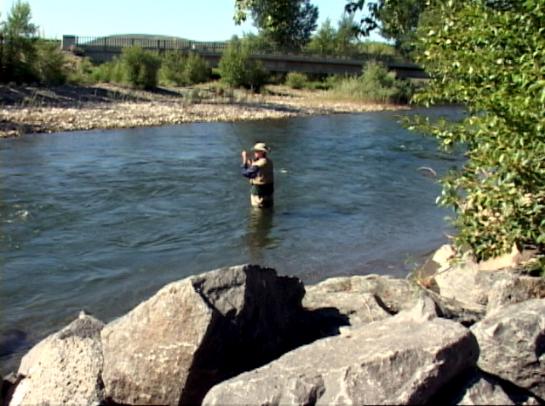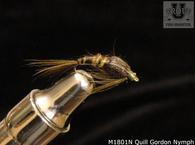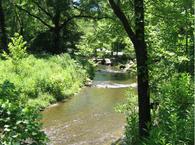
The Big Wood River's name comes from the many cottonwood trees growing along the banks and often falling into the river. The Big wood flows along Idaho Rt. 75 for about 50 miles and is well known by those who ski at Sun Valley. It is a freestone stream with a good population of rainbow trout. The Big River headwaters start in the gulches below the 9,000 foot Galena Summit in the Sawtooth Mountain Range. It flows between many mountains before finally entering the beautiful Sun Valley and emptying into the Magic Reservoir.
The North Fork of the Big Wood enters the main river about ten miles north of Ketchum. The East Fork originates in the Pioneer Mountains and enters the Big Wood at Gimlet. The upper portions of the Big Wood above the North Fork confluence are steep and strewn with some very large boulders creating pocket water. Below that confluence, the gradient becomes gentler and the rocks are smaller. At this point, long pools, riffles and runs are more common.
There are two major events that affect the fly fishing on the Big Wood River.The first is the snow pack melting in the spring which brings the high fast water. In wet years there is a great deal of rain and a deep snow pack, supporting good fishing conditions. When there is a deep winter snow pack, the runoff begins in May and can last nearly to the end of June. The river can be floated successfully during this time.
The second major event is the irrigation needs which brings the water levels low. There is a diversion dam below Bellevue that effectively channels a good deal of water from the main stream. This diversion causes lower water levels and consequently lower temperatures in the lower end of the Big Wood River which adversely affects the late summer fishing.
Fly Fishing the Big Wood River:
From the Big Wood River headwaters down to the confluence of the North Fork, the Big wood is hatchery supported and the trout in this section are primarily rainbows that might average 9 to 12 inches in length but it is not uncommon to catch some up to 20 inches. Below the confluence of the North Fork, down to the Magic Reservoir the river is populated with wild trout with rainbows being more frequent above Bellevue and the browns being more common below Bellevue.
Below the Magic Reservoir is a tailwater section that can be very productive and tends to hold some of the larger trout, however, when the irrigation is in progress, the water levels can become very low.
Spring & Summer:
The season begins at the end of May, but is not as productive as the fall season. However, once the river clears start with Western Green Drake, Yellow Stone Flies and Mayflies. In the upper reaches dry flies will work well. Due to the cotton woods and the brush, terrestrials work well in the summer. Check the regulations for the section that you want to fish.
Fall:
Argueably, the best time to fish the Big Wood is in the fall. In October, the red quills and the second brood of BWO will be good as will some terrestrial hang overs.
Winter:
The winter months offer some excellent fishing on the river with Midges and other nymphs as well as streamers being productive.
Access is along Rt 75 which follows the Big Wood for about 50 miles however below the dam, there is some brush making it difficult to access at times.





